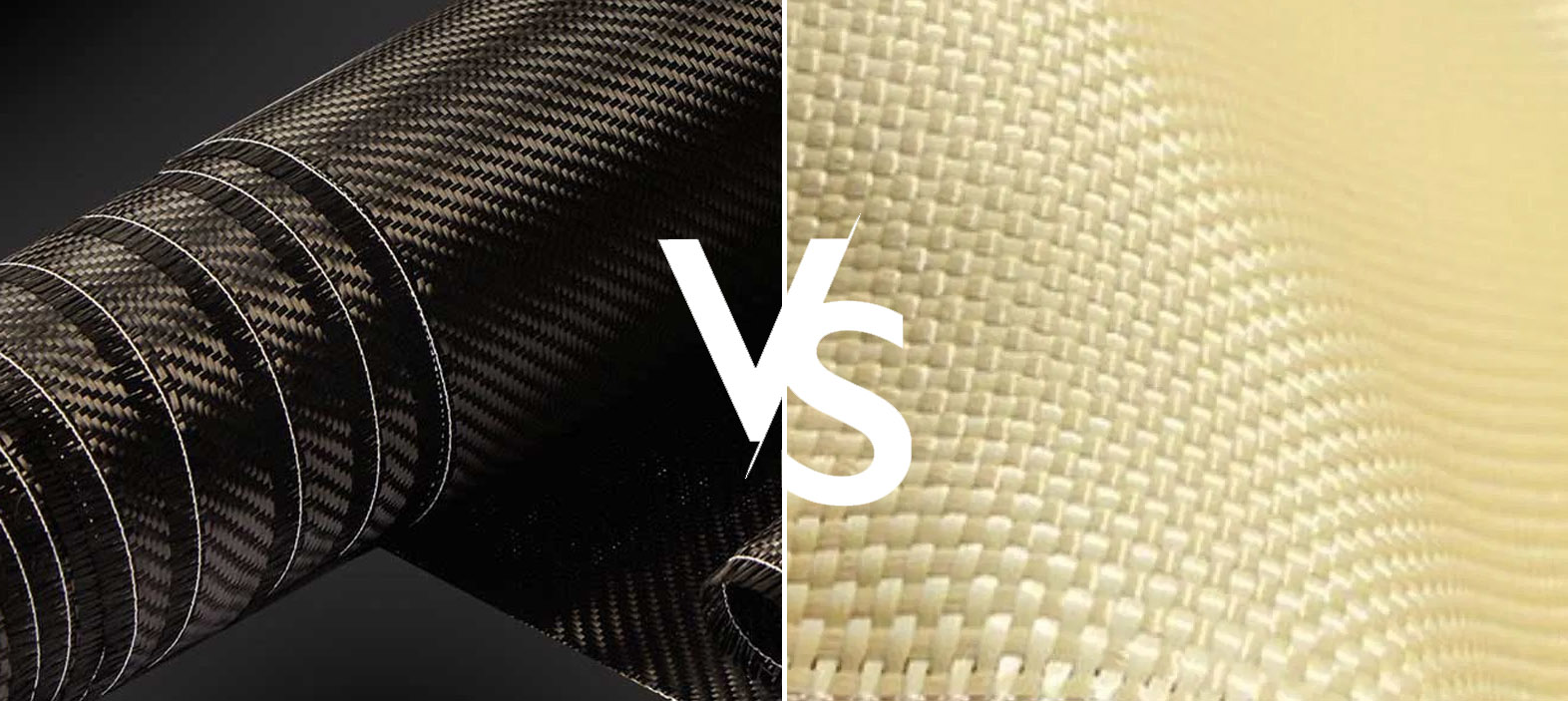
Carbon Fiber vs. Kevlar: Which is Better for Your Needs?
👁 Reads: 2628
In the world of high-performance materials, carbon fiber and Kevlar are two of the most popular choices. Both Kevlar and carbon fiber have interesting histories that showcase material exploration and innovation. Both materials offer unique advantages, making them ideal for various applications in industries such as aerospace, automotive, sports equipment, and more. Understanding the differences between carbon fiber and Kevlar is crucial for selecting the right material for your specific needs. In this blog post, we will discuss the similarities and differences between Carbon Fiber and Kevlar, how they are made and the benefits and downsides of each.
Understanding Carbon Fiber and Kevlar
Carbon fiber is a polymer that is five times stronger than steel and twice as stiff, yet significantly lighter. It consists of thin strands of carbon woven together and then combined with a resin to form a composite material. This unique structure gives carbon fiber its exceptional strength-to-weight ratio, making it ideal for high-performance applications. Carbon fiber can be woven into cloth to make fabric, moulded into carbon-fiber reinforced plastics (or ‘carbon-fibre’), or even used with Kevlar in protective clothing and bullet-resistant products. Carbon fiber products like prepreg carbon fiber tubes, carbon fiber sheets, and carbon fiber rods find application in various industries. Carbon fibers are also used in the aerospace industry for structural parts of airplanes as well as many other applications.
Kevlar is a fabric that is exclusively made by Du Point. It is created using aramid polymers where the molecules get arranged in parallel lines; the fibres are then knitted tightly together. It is known for its high tensile strength-to-weight ratio, making it highly resistant to impact and abrasion. Kevlar's primary application is in protective clothing and bullet-resistant products because of its high tensile strength and toughness. It is sturdy but also flexible. Kevlar can be up to 100 times stronger than steel by weight and it will stretch significantly without breaking under tension. Kevlar is also lightweight, which makes it more comfortable for the user while still providing protection. Kevlar is lighter and more comfortable but not as strong as carbon fiber. Also, Carbon fiber is much more straightforward to cut, sand and machine in comparison to Kevlar, which requires specially made drill bits once laminated.
Carbon Fiber vs. Kevlar: A Comparative Analysis
Strength and Weight
Both carbon fiber and Kevlar are known for their high strength-to-weight ratios, but they excel in different areas. Carbon fiber is stiffer and stronger in tension, making it ideal for structural applications where rigidity is crucial. On the other hand, Kevlar offers better impact resistance and is lighter than carbon fiber, making it ideal for applications where weight is critical.
Flexibility and Toughness
Kevlar’s flexibility and toughness make it an excellent choice for applications requiring material deformation without breaking, such as ballistic protection. Carbon fiber, while extremely strong, is more brittle and can crack under severe impact or stress.
Heat Resistance
Kevlar has a higher resistance to heat compared to carbon fiber, maintaining its properties even at extreme temperatures. This makes Kevlar suitable for applications involving high heat, such as firefighter suits or helmets at construction sites where high temperatures are common amongst other uses.
Corrosion Resistance
Both materials are highly resistant to corrosion. Carbon fiber does not rust or corrode, which is beneficial for applications exposed to harsh environments. Kevlar is also resistant to chemicals and moisture, making it durable in various conditions.
Manufacturing Costs
Carbon fiber manufacturing involves specialized processes and machinery, which can drive up costs. However, while carbon fiber has higher material costs, it can lead to significant cost savings in automotive manufacturing due to reduced tooling and simpler assembly compared to steel. These cost savings can offset the higher material costs, especially at higher production volumes. Kevlar manufacturing may be more cost-effective due to its suitability for applications like bulletproof vests, where the material properties are more important than the manufacturing process. In summary, while Kevlar may have a manufacturing cost advantage due to its suitability for certain applications, carbon fiber can offer significant cost savings in industries like automotive through its unique properties and manufacturing methods. As carbon fiber technology continues to advance, its manufacturing costs are expected to decrease, making it more cost-competitive with other materials
Choosing the Right Material
When deciding between carbon fiber and Kevlar, consider the specific requirements of your application:
For Structural Strength and Lightweight Design: Carbon fiber products, such as prepreg carbon fiber tubes, sheets, and rods, are ideal.
For Impact Resistance and Durability: Kevlar is the better choice for applications that require high toughness and the ability to absorb energy.
Conclusion
Choosing between carbon fiber and Kevlar depends on your specific application needs. Carbon fiber products offer unmatched strength and rigidity, making them ideal for structural applications in aerospace, automotive, and sports equipment. On the other hand, Kevlar's superior impact resistance and flexibility make it the material of choice for protective gear and applications requiring high durability. Both materials excel in their respective areas, and understanding their unique properties will help you make the best choice for your project.





